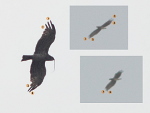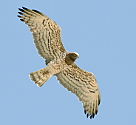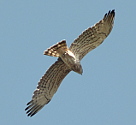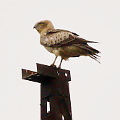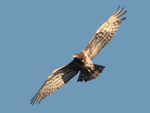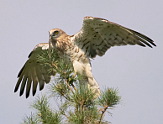Monitoring of 9 different pairs of Short-toed Eagles has been conducted during 10 years in Northern Ukraine (Kiev Region /map/, Mizhrichynskyi Park /map/ of Chernihiv Region, southern part of Sumy Polissya /map/). Some calculations and results of the monitoring are represented in tabular forms:
• K. PISMENNYI, 2013 – Some data on breeding of Short-toed Eagle in Northern Ukraine // short-toed-eagle.net –  ; in the form of XLS file with formulas:
; in the form of XLS file with formulas:  (En).
(En).
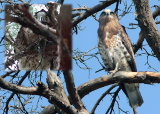 Average breeding success amounts to 0.60 juvenile / territorial pair and is quite close to this index for France: 0.57. The last result is based on observations of 2835 (!) breeding cases which have been managed to make by French national Circaetus gallicus network for 11 years (Bernard Joubert, personal communication). Also some other conclusions can be made: old pines (Pinus sylvestris) are prefered by Short-toed Eagles for nesting in Northern Ukraine; the eagles more often change their nests than they successfully breed; nest height is highly variable; the eagles’ choice of a nest depends on their previous breeding success; after an unsuccessful season the nest is changed with high probability, after successful one the following choice of a nest is unpredictable.
Average breeding success amounts to 0.60 juvenile / territorial pair and is quite close to this index for France: 0.57. The last result is based on observations of 2835 (!) breeding cases which have been managed to make by French national Circaetus gallicus network for 11 years (Bernard Joubert, personal communication). Also some other conclusions can be made: old pines (Pinus sylvestris) are prefered by Short-toed Eagles for nesting in Northern Ukraine; the eagles more often change their nests than they successfully breed; nest height is highly variable; the eagles’ choice of a nest depends on their previous breeding success; after an unsuccessful season the nest is changed with high probability, after successful one the following choice of a nest is unpredictable.
